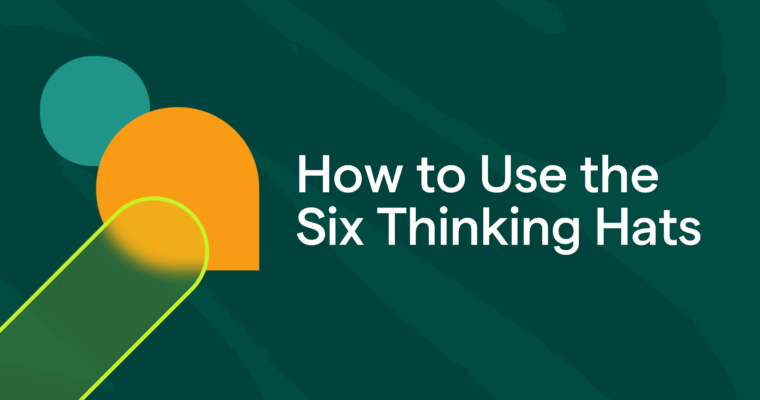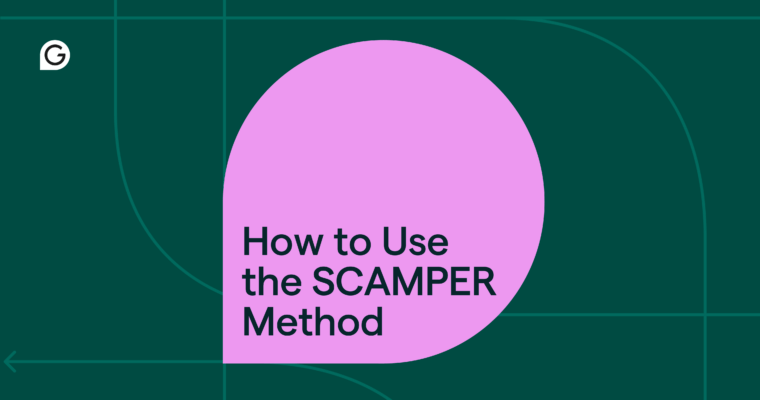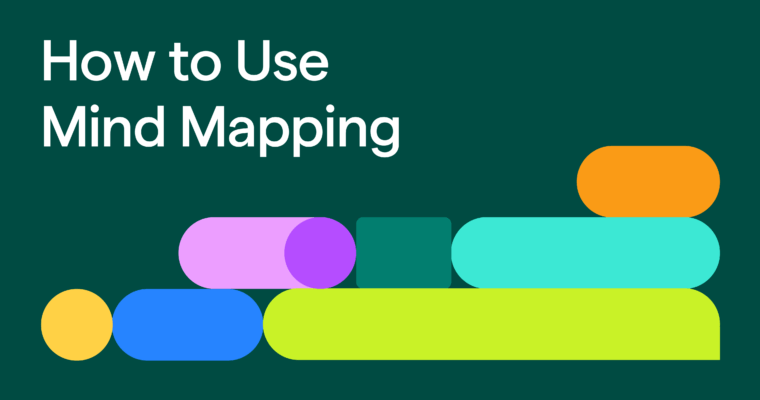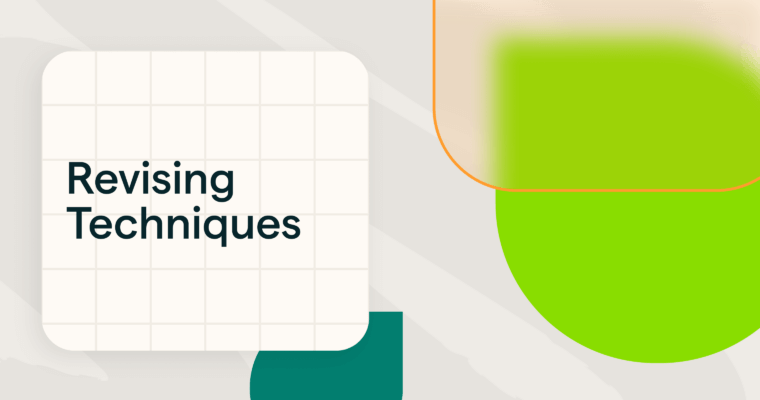
Key takeaways
- The Six Thinking Hats method helps writers explore their ideas from six distinct perspectives: factual, emotional, cautious, optimistic, creative, and organizational.
- By separating logic, creativity, and critique, it brings structure to brainstorming and decision-making.
- Writers can use the technique to plan content, refine a piece’s tone, and strengthen arguments in essays, stories, and professional writing.
- Applying this structured approach encourages balanced thinking, better collaboration, and clearer communication.
When you’re writing, it’s easy to mix creative brainstorming with self-critique. This is true whether you’re writing a blog post, an essay, a proposal, or any other type of content. The result of brainstorming mixed with self-critique? Stalled ideas and second-guessing. The Six Thinking Hats method, developed by psychologist Edward de Bono, offers a solution by helping you separate emotional, creative, and logical thinking so you can approach the writing process with clarity and confidence.
Each “hat” represents a distinct way of thinking. By consciously switching among them, writers can move from idea generation to evaluation without confusion or conflict. In short, it’s a framework for balanced, productive thinking that improves both solo writing and group collaboration.
Table of contents
- What is the Six Thinking Hats technique?
- How to use the Six Thinking Hats step by step
- What are the benefits of using Six Thinking Hats?
- Six Thinking Hats examples for writers
- Best practices for using Six Thinking Hats
- Common mistakes to avoid
- How Grammarly can support the Six Thinking Hats technique
- Six Thinking Hats FAQs
What is the Six Thinking Hats technique?
The Six Thinking Hats method is a structured thinking framework that encourages you to explore a topic from six perspectives, each represented by a colored “hat.” Rather than debating ideas or jumping between logic and emotion, you focus on one mode of thinking at a time. This approach, called parallel thinking, keeps the process organized and prevents premature judgment.
Writers can use it to balance creativity with analysis, ensuring every piece of writing considers facts, tone, logic, and originality. It’s popular in education, creative teams, and content planning because it replaces unstructured brainstorming with focused exploration.
What are the six thinking hats?
1. White hat: Facts and Information
Focus: Data, evidence, and what’s known or missing
Example: When outlining a research essay, use the white hat to list statistics, studies, and credible sources you’ll cite.
Use it when you need clarity about evidence or background research.
2. Red hat: Feelings and intuition
Focus: Emotions and gut reactions
Example: Use the red hat to consider how readers might feel about your opening paragraph or story tone—are you evoking curiosity or confusion?
Use it when testing tone, audience alignment, or emotional resonance.
3. Black hat: Caution and critique
Focus: Risks, weaknesses, or what could go wrong
Example: During revision, wear the black hat to identify weak arguments or sections that could lose reader trust.
Use it when you need to stress-test logic or ensure clarity.
4. Yellow hat: Optimism and benefits
Focus: Strengths, opportunities, and value
Example: Use the yellow hat to highlight what works well in your draft or what benefits your argument or proposal offers.
Use it when refining persuasive writing or pitches.
5. Green hat: Creativity and new ideas
Focus: Generating alternatives and exploring possibilities
Example: Apply the green hat to brainstorm headlines, metaphors, or unique angles for your topic. Use it when brainstorming or breaking through writer’s block.
6. Blue hat: Process and structure
Focus: Organization, reflection, and control of the thinking process
Example: Use the blue hat to decide on your outline or to summarize conclusions after brainstorming. Use it when you’re ready to synthesize insights or plan next steps.
How to use the Six Thinking Hats step by step
You can use this method alone or with others. In both cases, the goal is to move through each hat separately, rather than blending them together.
Step 1: Define your goal or problem
Start with a clear question to guide your thinking. For example: “How can I make my essay’s argument more engaging?”
Write it at the top of a page or document. A focused question keeps every hat aligned with the same purpose.
Step 2: Decide how to wear the hats
If you’re working solo, cycle through the hats one at a time and jot notes for each. In group writing sessions, have everyone “wear” the same hat together before moving on.
Example: During a content-planning meeting, spend five minutes as a team under the white hat (facts) before switching to the green hat (ideas).
Step 3: Explore each hat’s viewpoint
Move through the hats in order or adapt based on context.
For writing, here’s one helpful sequence.
- White: Gather facts and data.
- Green: Generate ideas.
- Red: Test emotional impact.
- Black: Spot risks and flaws.
- Yellow: Identify strengths and opportunities.
- Blue: Summarize and decide on next steps.
Step 4: Capture key takeaways
Use a table or six labeled notes to record insights under each hat. Writing things down clarifies your thought process and gives you a record to revisit later.
Step 5: Use the blue hat to synthesize
Finish with the blue hat. Review what you discovered and make decisions about what to keep, cut, or revise.
What are the benefits of using Six Thinking Hats?
The Six Thinking Hats method offers both cognitive balance and creative freedom. For writers, it transforms scattered ideas into structured insight. In doing this, the Six Thinking Hats offers a range of specific benefits, such as:
Encourages balanced thinking
Each hat represents a mindset, such as emotional, logical, critical, or creative, that writers often switch between unconsciously. Intentionally separating them ensures that no single mode dominates your brainstorming, writing, or editing.
Improves clarity and decision-making
By the time you reach the blue hat phase, you’ve explored facts, emotions, and possibilities. This complete view helps you make stronger decisions about tone, argument, and structure.
Strengthens creativity
The green hat gives you permission to generate ideas without judgment. Later, the black and yellow hats help you refine them, so your creativity feels purposeful, rather than chaotic.
Reduces self-criticism
Writers often judge their work too early. The hats method keeps critique (black hat) separate from ideation (green hat), reducing the urge to edit mid-draft and improving its flow.
Supports collaboration
In teams, the method aligns everyone’s focus. Instead of debating, participants examine the same issue from the same perspective, which keeps meetings productive and respectful.
Six Thinking Hats examples for writers
To see how this technique works in practice, here are three writing scenarios.
Academic writing
Scenario: A student is developing a persuasive essay on whether universities should make tuition free.
- White hat: Researches statistics on tuition costs, debt levels, and international education models. How does the average college tuition rate compare to the average salary? What percentage of students pay full price versus those who receive financial aid?
- Red hat: Reflects on student stress and emotional impact. Determine how tuition impacts students emotionally.
- Black hat: Questions the feasibility and government funding. Would free tuition negatively impact the quality of education or life on campus?
- Yellow hat: Identifies long-term societal benefits like equality and innovation. Has free tuition been implemented before? If so, what were the results?
- Green hat: Suggests hybrid funding or “free for some” models. This step introduces solutions after considering the points previously made.
- Blue hat: Outlines essay structure: context → arguments → counterarguments → conclusion. With a clear view of the topic, the student can write a well-thought-out outline and essay.
Professional writing
Scenario: A marketing manager is revising a campaign proposal.
- White hat: Reviews performance metrics and customer feedback. At this step, they gather all the relevant data and key insights.
- Red hat: Considers how the message makes the audience feel—motivated or pressured. The manager determines what drives these reactions in the message.
- Black hat: Flags jargon and unclear calls to action. The manager removes these from the proposal.
- Yellow hat: Emphasizes strengths: strong visuals, timely relevance. The manager replaces the jargon and unclear calls to action with more accessible, aligned language.
- Green hat: Brainstorms new campaign taglines. Using the information gathered and generated from the prior steps, the manager explores fresh creative assets for the proposal.
- Blue hat: Finalizes next steps and timeline for revision. The manager implements the edits and prepares to present the proposal to the client.
Creative writing
Scenario: A novelist is stuck on an unsatisfying ending.
- White hat: Lists what’s known—character arcs and unresolved conflicts. These can be placed into charts or graphs for easy reference.
- Red hat: Explores emotional tone: Should readers feel hopeful or unsettled? What do they feel about the current version of the draft?
- Black hat: Notes pacing issues and weak climax. These are flagged to be reworked.
- Yellow hat: Recognizes strong themes about resilience. By recognizing the story’s themes, the author can find creative ways to strengthen them in the prose.
- Green hat: Imagines alternative endings or flash-forward epilogues. These new ideas can spark different outcomes for preceding scenes and reshape character motivations.
- Blue hat: Chooses one direction and plans revisions chapter by chapter. The author can clearly see how they’ll revise their story.
Best practices for using Six Thinking Hats
- Start with a clear question. Define your goal before putting on the first hat. This way, you’ll know what to do while wearing each hat.
- Give each hat equal time. Avoid skipping or favoring one mode. Balance produces better results, so spend the same amount of time with each hat.
- Timebox your thinking. Spend five to ten minutes per hat to prevent overanalyzing. This keeps you on a balanced schedule.
- Document your insights. Jot notes or use a shared doc so ideas aren’t lost when switching hats. Often, hats reference each other, so you’ll want an easy reference to look back at.
- Use the blue Hat for structure. Begin and end with it to stay organized and close the loop on your thinking. With this hat, make changes based on what you’ve gleaned from wearing the other hats.
- Be flexible. Adapt the order or timing depending on your project. For a quick brainstorm, you might use just green, yellow, and black hats. Sometimes, you don’t need all six of the hats—but you’ll probably be using the blue hat with most projects.
Common mistakes to avoid
- Skipping hats. Ignoring one perspective—especially the emotional or creative ones—creates gaps in your understanding. Give each hat a chance, even if it doesn’t seem to be immediately relevant to your project.
- Overemphasizing critique. Spending too much time in the black hat phase can stifle creativity. Critique from a neutral place, but make sure you spend just as much time finding positives in your work.
- Using hats as debate roles. They’re shared perspectives, not opposing sides. Often, you’ll find overlap between the hats’ insights, so identify those connections and build on your ideas.
- Failing to record ideas. Without notes, valuable insights get lost between hats. Take comprehensive notes.
- Being too rigid. The goal is structured flexibility, not a strict checklist. If it turns out that one hat needs more time than others, give it the time it needs. Just don’t let it be at the other hats’ detriment.
- Forgetting the blue hat. Use it at both the start and end to guide and summarize your process. The blue hat is where you put the other hats’ work into action.
How Grammarly can support the Six Thinking Hats technique
Grammarly complements the Six Thinking Hats approach by providing tools that enhance each phase of thinking.
- Apply Grammarly’s tone and clarity feedback during the red and yellow hat phases to refine how your writing feels and persuades.
- Get a deeper analysis with Expert Review, which highlights logic gaps and content weaknesses. It’s perfect for the black hat phase.
- Preview how readers might respond through Reader Reactions to test tone and clarity before finalizing your work.
- When you return to the blue hat, Grammarly’s suggestions help you synthesize insights into a concise, well-structured final draft.
Grammarly doesn’t replace creative thinking; it strengthens it by turning your ideas into clear, reader-ready writing. When you use the Six Thinking Hats method to assess your work, Grammarly can provide helpful feedback through its suite of AI-powered tools. However, your unique voice will always be yours alone.
Six Thinking Hats FAQs
What is the purpose of Six Thinking Hats?
It’s a structured technique that helps individuals and teams think more clearly by exploring problems or ideas from six perspectives: fact, feeling, caution, optimism, creativity, and organization.
Can writers use this method alone?
Yes. Writers can rotate through the hats to brainstorm, plan, or revise with balance and objectivity.
Is Six Thinking Hats a decision-making tool or a creativity tool?
Both. It improves decision-making by ensuring balanced reasoning while giving creativity dedicated space to grow.
How is it different from traditional brainstorming?
Traditional brainstorming mixes critique with ideas. The Six Thinking Hats method separates them, making sessions more focused and productive.
Why is it useful for writers?
It turns vague ideas into structured plans, encourages reflection on tone and logic, and helps writers approach their work from every angle for stronger, clearer results.






